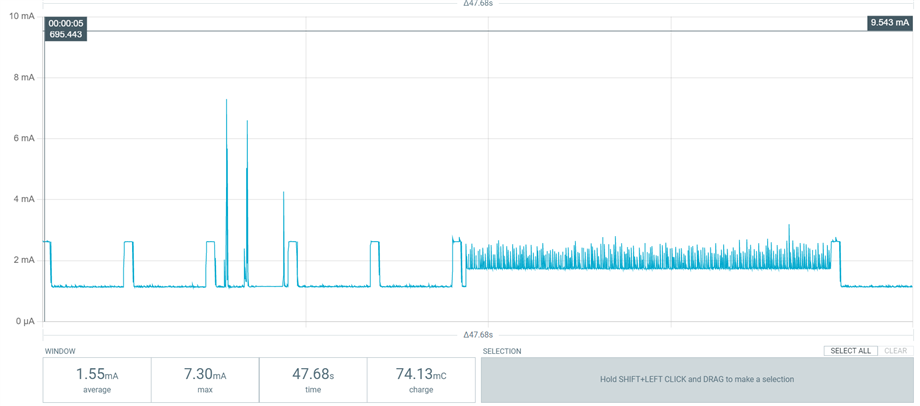Hello,
I'm currently using nRF5340 as BLE transmitter, however, it appears that input current it quite high even when the device is not advertising.
I made a small code that initialise BLE and that enable and disable advertising periodically with bt_le_adv_start() and bt_le_adv_stop() functions. As soon as the BLE is configured, the current goes up to and remains around 8 mA (average).
Is there any way to reduce current consumption when nRF5340 is not advertising ?
Thank you,
Best regards



